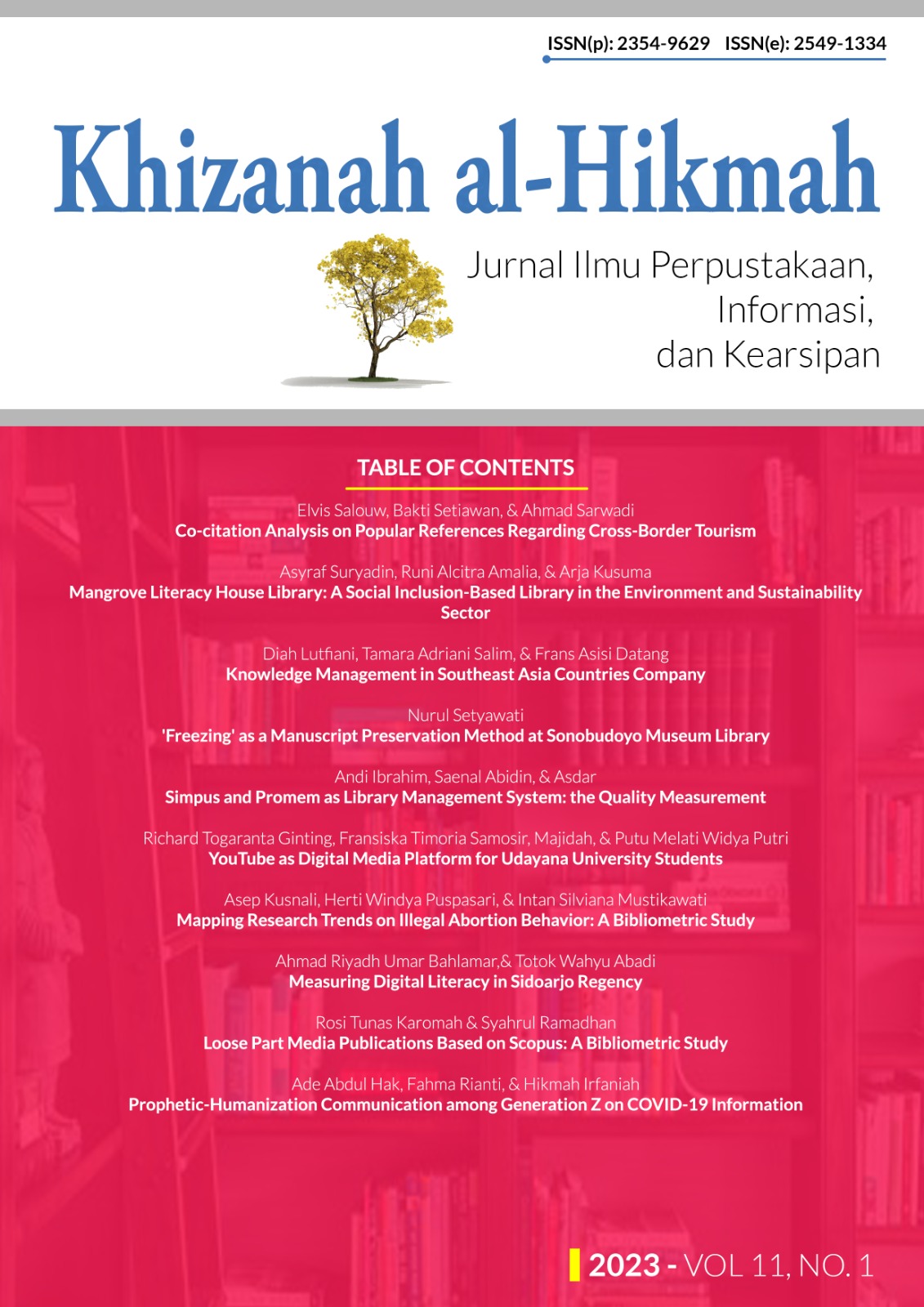The Jatinangoriense Herbarium as Learning Innovations within the Independent Learning Independent Campus (MBKM)
DOI:
https://doi.org/10.24252/kah.v11i1.cf2Keywords:
Museum, biocurator, herbarium jatinangoriense, knowledge managementAbstract
The Jatinangoriense Herbarium is a teaching herbarium managed by the Biosystematics and Molecular Laboratory, Department of Biology, Faculty of Mathematics and Natural Sciences, Padjadjaran University. It stores approximately 8,000 specimens, including collections of angiosperms, ferns, algae, fungi, seed collections, simplicia, and carpology. The herbarium serves as a facility for learning, research, community service, and plant identification services. In line with the Merdeka Belajar Kampus Merdeka (MBKM) program, the presence of this teaching media plays an essential role in supporting the program as a means of developing digital teaching media and courses that focus on the competence of biocurators. This qualitative research employs the 4D model with four stages: define, design, develop, and disseminate. The result is an instructional video on the techniques and management of the herbarium, which serves as one of the teaching materials in the Collection and Management of Biological Specimens course. Additionally, the MBKM program facilitates off-campus students by using digital learning facilities, encouraging universities to develop virtual museums and herbaria that can be widely accessed as sources of knowledge. The Bachelor's Degree Program in Biology at the Faculty of Mathematics and Natural Sciences, Padjadjaran University, provides students with the opportunity to learn and practice the development of a virtual herbarium through the Digitalization of Biological Objects course, utilizing various specimens from the Jatinangoriense Herbarium.
Downloads
References
Cantrill, D. J. (2018). The Australasian Virtual Herbarium: Tracking data usage and benefits for biological collections. Applications in Plant Sciences, 6(2), e1026.
Contiu, A., Contiu, H. V., & Toderas, A. (2021). Students'" Virtual Herbarium"--A Research Project on Plants and Specific Living Environments. Romanian Review of Geographical Education, 10(2), 23-43.
Cota-Sánchez, J. H. (2020). The value of virtual natural history collections for botanical instruction in these times of the COVID-19 pandemic. Brazilian Journal of Botany, 43(4), 683-684.
Flannery, M. C. (2013). Plant Collections Online: Using Digital Herbaria in Biology Teaching. Bioscene: Journal of College Biology Teaching, 39(1), 3-9.
Girmansyah, D., Santika, Y., Rugayah dan Rahajoe, J.S. (2018). Index Herbariorum Indonesianum. Jakarta: LIPI Press
Kemendikbud. (2020). Peraturan Menteri Pendidikan dan Kebudayaan Republik Indonsesia Nomor 3 Tahun 2020 Tentang Standar Nasional Perguruan Tinggi.
Maden, K. (2004). Plant collection and herbarium techniques. Our Nature, 2(1), 53-57.
Monfils, A. K., Krimmel, E. R., Linton, D. L., Marsico, T. D., Morris, A. B., & Ruhfel, B. R. (2022). Collections Education: The Extended Specimen and Data Acumen. BioScience, 72(2), 177-188.
Monfils, A. K., Powers, K. E., Marshall, C. J., Martine, C. T., Smith, J. F., & Prather, L. A. (2017). Natural history collections: teaching about biodiversity across time, space, and digital platforms. Southeastern Naturalist, 16(sp10), 47-57.
Setiawan, E., Darnaedi, D., Rachman, I., Triono, T., & Webb, C. O. (2020). The digital herbarium: Solutions for data collection and identification of Indonesian plant diversity. Biogenesis: Jurnal Ilmiah Biologi, 8(2), 203.
Tegeh, I. M., Simamora, A. H., & Dwipayana, K. (2019). Pengembangan Media Video Pembelajaran Dengan Model Pengembangan 4D Pada Mata Pelajaran Agama Hindu. Mimbar Ilmu, 24(2), 158-166.
Downloads
Published
How to Cite
Issue
Section
License
By submitting your manuscript to our journal, you are following Copyright and License



